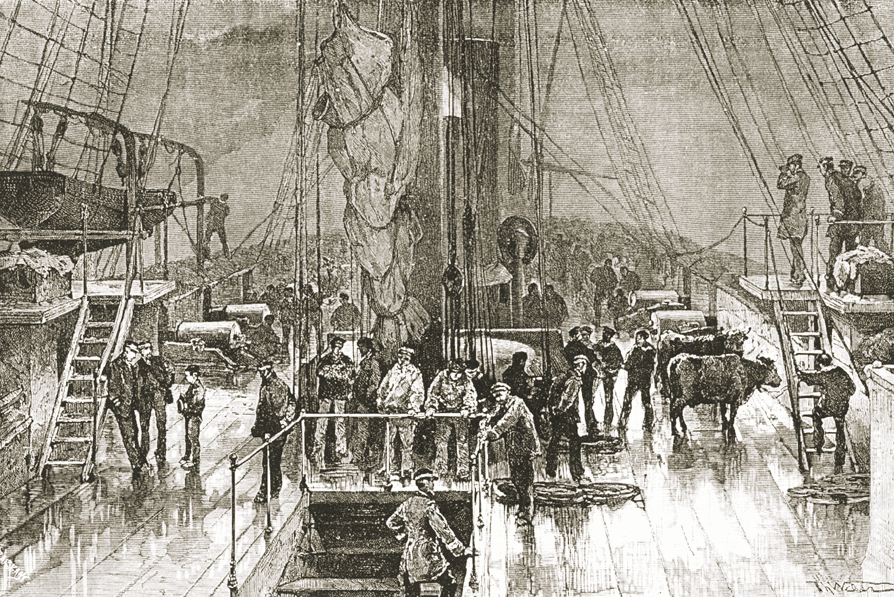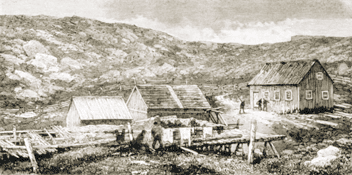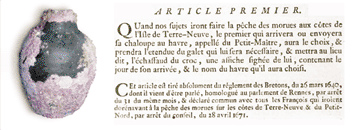|
Croque is located 28 km south of Main Brook along Route 438.
Situated along a hook-shaped bay, the name Croque probably comes from the old French croc, meaning boat-hook. In 1640, French ships sailing to the northeast French Shore were required to register at Croque harbour, earning Croque the name Capital of the French Shore. After signing in, the fishing ships were dispatched to the various harbours along the northeast French Shore.
Croque later became the headquarters for French naval ships patrolling the French Shore to protect their fisheries from the British. In the cemetery in Croque, you can see headstones of both French and English mariners from the 18th and 19th centuries. A French naval vessel, the Commandant Bourdais, continued to sail regularly to Croque until the 1970s to tend the graves.

|

In 1765, the famous botanist Joseph Banks spent a season in Croque collecting plant samples.
In the early 1800s, Patrick Kearney and James Hope were the first settlers in Croque, employed as winter caretakers of the French fishing stations. The mysterious disappearance of James Hope’s wife and children while he was away in St. Julien’s has since become a local legend.
Until the 1992 moratorium on fishing cod, the inshore fishery was the mainstay of the community. Residents harvested cod, salmon, seals, herring, mackerel, squid and lumpfish roe. Today’s community continues to fish on a limited basis, operates a sawmill, and is developing a modest ecotourism industry.

|

